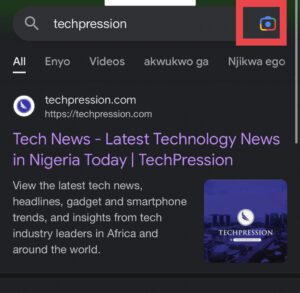Google’s primary search bar and homepage facilitate its sophisticated picture recognition and search capabilities. The Google Lens logo has replaced the Google Images logo everywhere.
The fact that Google Lens is so accurate at locating photos makes it more difficult to use, so Google has simplified it for everyone to use. You can copy and translate text from images by collecting matching picture results.
Google is attempting to incorporate Google Lens’ visual search features into its browser to allow new sorts of searches that can detect what you see. Google Lens now works on desktops. Instead of opening a new tab to search, you can use Lens on the same page in Chrome to translate an image’s text, identify an object, or get the image’s source.
Read also: ‘Google Hangouts’ Web App shuts down
Google Lens Feature
Google had Lens features on the web in Image search and Google Photos, but its best features were on mobile devices. Google also released Lens-powered multi-search on mobile this April, letting users search with text and images. This may signify that the company wants to invest more in Lens technology to make searches more natural.
Before this, the company had said that Lens would also be added to Chrome for desktops in the “coming months.”
So, Chrome browser users on the desktop will be able to right-click on any image on a web page and choose “Search image with Google Lens” from the new menu. This is the same menu where you can save, copy, or open the image in a new tab.
Google Lens replaces Google Images in search results

This feature is similar to the reverse image feature found in Microsoft’s more recent web browser, Microsoft Edge. That feature also enables users to conduct a reverse image search in a sidebar without having to switch tabs. The feature in question is very similar. However, Bing is the one that really does the searching for you.
Google has announced that it will begin rolling out the new feature to all Chrome users. This is part of the company’s larger effort to assist people in searching in ways that are more intuitive.
















